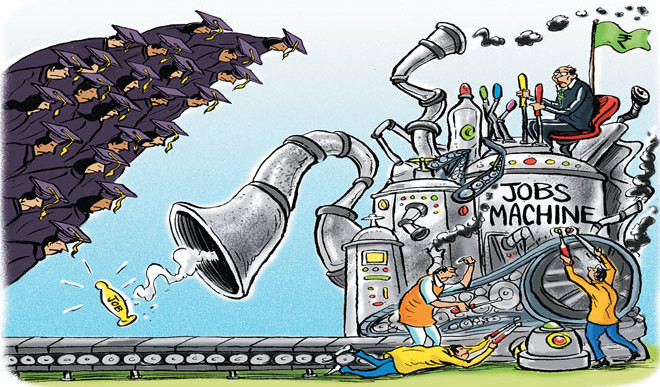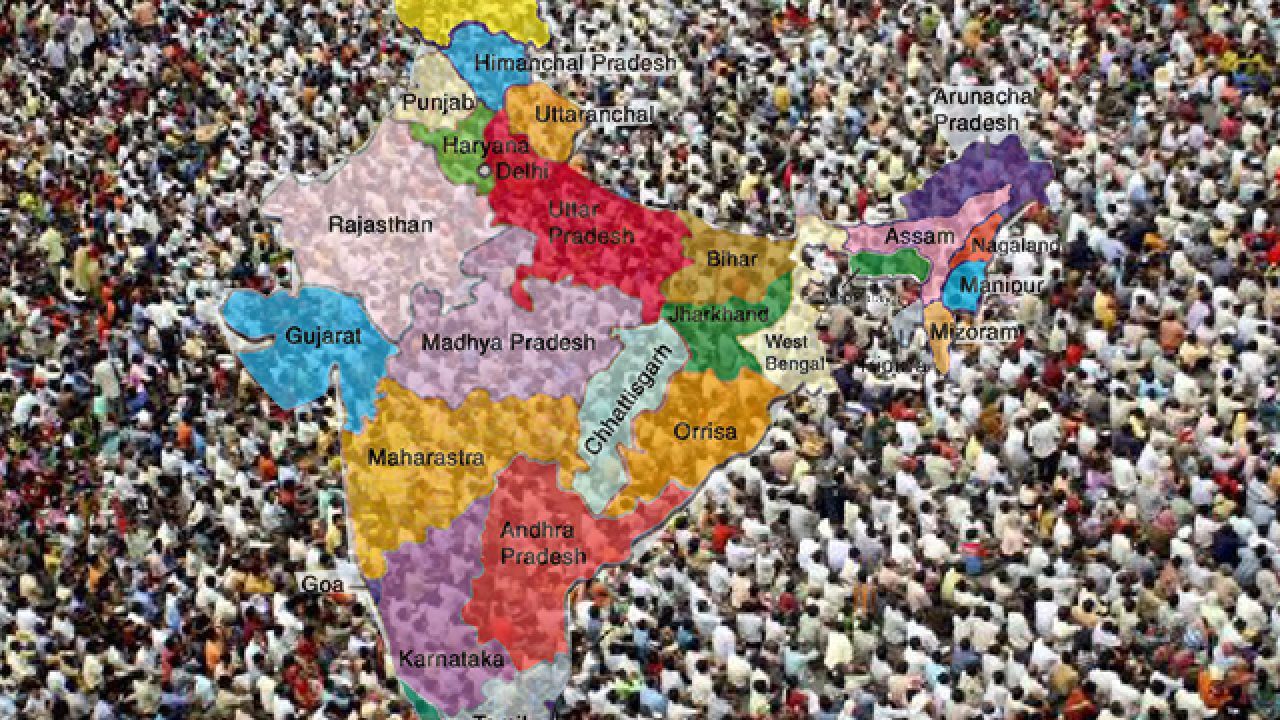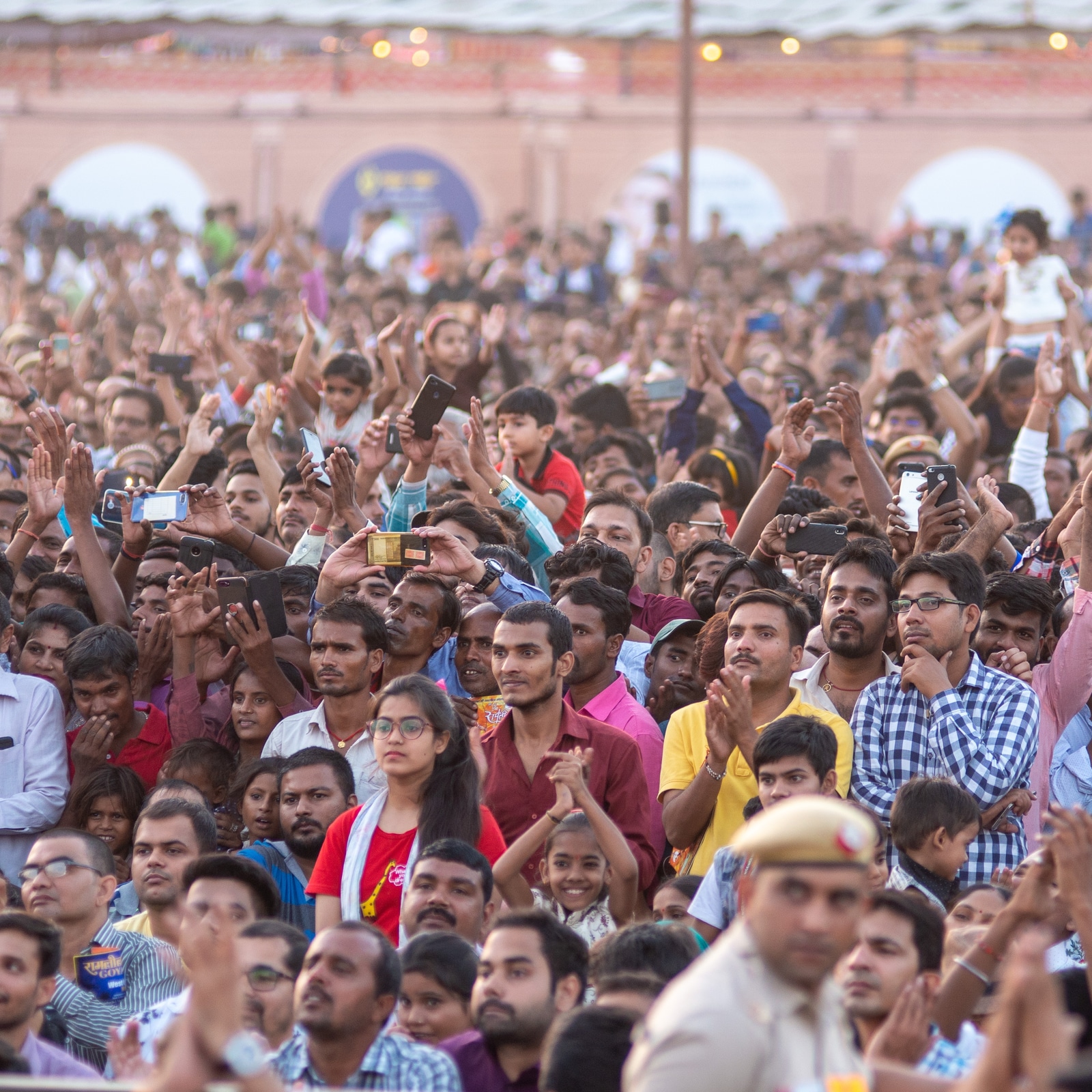India’s population growth: Is it boon or bane?

India’s population growth: Is it boon or bane?
The poorest people, those living in the least developed states, those who lack access to education, and those who are undernourished are seeing population growth that is greater than the country’s average.
In 2022, India and China will account for almost 2.8 billion of the 8 billion people who will inhabit the planet. Even though they will have 1.37 billion people in 2050, compared to India’s 1.66 billion, the Chinese are clearly ageing as a result of their recently repealed One Child Policy, which was first implemented in the 1970s.
But it will take two to three decades to see a shift favoring younger Chinese. How will they survive in the interim? And that is assuming that young adults who are struggling financially actually choose to have more children. People yearned for additional kids when the One-Child Policy was implemented. However, many young people nowadays just don’t. The Western tendency has long since changed direction.
The native population is declining as fewer people are having children in Europe, America, and other industrialized nations. Many locations now have negative growth rates. In parts of Germany near woodlands, there are abandoned communities where wolves are recovering.
Social pressures are brought on by immigration, refugees, and guest workers because of the collision of cultures, races, and religions. In addition, there are racial conflicts left over from past generations’ labor immigration of different nationalities.
Even with progressive and enlightened policies, most nations face the unsettling “melting pot” scenario, especially when debts have skyrocketed, economies are not expanding as they once did, and the current situation raises the possibility of a recession.
Following the devastation of COVID-19, a Russian-led conflict in Ukraine has come dangerously close to destroying the economies of the US, EU, and UK.
In India, birth rates have undoubtedly decreased since the 1970s, and for the first time, we are slightly below the replacement rate of 2.1 at 2.0. However, due to a large base population, the numbers will increase by 2050, rising from over 1.4 billion to almost 1.70 billion.
If the average birth rate continues to fall until it reaches 1.0 in 2070, the Indian population will finally start to drop. The good news is that almost one-third of Indians are under the age of 35, and this number will remain stable for the next 15 years even as the remainder of the population matures and faces rising expenditures and longer life expectancies.
However, no government in the twenty-first century should be responsible for creating work for millions of people. This is especially true now that there is greater mechanisation, which requires less labour to be effective and competitive. The service sector, which makes up more than 50% of the economy, and entrepreneurship, start-ups, and different forms of self-employment are the only solutions.
However, this necessitates ongoing skill development. Because of this, the government is working with businesses to offer opportunities for skill development, vocational training, and refresher courses. At least for the majority of people, the traditional university degree route to employment is basically obsolete.
Since we can feed this enormous population by cultivating all of our own food and producing a surplus for export, things are sufficient right now in absolute terms. Contrarily, China, which imports a large portion of its food and is experiencing shortages, does not.
The poorest, in the least developed areas, the illiterate, and the undernourished are seeing a population rise that is greater than the country’s average.
Urban India is consciously regulating its population increase because of higher earnings, improved understanding of and acceptance of contraception; education; health and aspiration, and a widening urban-rural split. Most families don’t have more than two kids.
As hereditary land holdings are continually divided into smaller and smaller parts, rural India is witnessing a gradual migration to towns, cities, and metropolises. Another common industry for landless labourers to find work in cities is construction. Hundreds of towns and cities now fall under the B, C, and D categories.
Some people have moved temporarily overseas, mostly to the Arabian Gulf. Millions of Indians labour overseas and pay generous remittances back to their homeland.
Rural service industries are frequently self-employed, and in years of abundant harvest, increased rural earnings encourage mechanisation, the sale of automobiles and farming equipment, commerce in a variety of items that may compete with metropolitan regions, and rising consumption.
In reality, the aggregated sales of several FMCG businesses are currently higher in rural regions than in metropolitan clusters. This is partially caused by the absence of rural taxes and MSP regimes. Access to the internet has empowered people and opened up domestic and international marketplaces.
The introduction of social media, satellite TV, and much greater access to land, rail, and waterway infrastructure has raised the level of sophistication and mobility among rural inhabitants. This is another example of the hinterland’s ongoing urbanization, which will intensify with the adoption of 5G. Already, the scenery from a decade ago is unrecognisable.
Therefore, it’s possible that these modernising factors will have a positive influence on the UN estimates, our own poll in 2021, as well as the impending census, the first after 2011.
However, even if no one is forced below the poverty line, per capita income cannot increase much until overall population numbers decline. Despite the fact that India’s GDP is growing faster than any other major economy, this per capita income illustrates the enormous disparity between India and the developed world.
When the GDP reaches $5 trillion, which is predicted to happen as soon as 2026–2027, the strain on our much-upgraded infrastructure won’t considerably lessen. The per capita income won’t go from about $2,000 to something like $50,000 in the industrialised world.
However, the industrialised world hasn’t had any population growth in the past 75 years, much less a quintupling of it, despite an outstanding increase in life expectancy to an average of 73, with a range of up to 83 years, thanks to better nutrition and healthcare.
We are able to cope, nevertheless, thanks to India’s third-place global buying power parity ranking. This is true despite our fair share of inflation and price increases in a world of pricey imported fossil fuels.
Another issue that places heavy demands on natural resources, utilities, land prices, and educational and medical facilities is population density. Three times as much land as we have is in China, although much of it is in sparsely populated regions like Tibet. Additionally, the majority of Han Chinese live in a region approximately bounded by the Pacific Ocean and the Great Wall of China.
China’s $15 trillion economy is currently experiencing headwinds from growth that is below average, at approximately 4%. Its long-established export economy has been severely damaged. Another issue is the domestic market’s low demand and offtake due to declining revenues and the failure of its international infrastructure projects. There are already too many buildings in the country, and thousands of flats have no renters.
The construction sector is in crisis. Food shortages, social turmoil, and a crippling mountain of domestic and foreign debt are all present in China today. It is not possible for it to consider returning to the double-digit growth rates of the 1980s, which kept its boom continuing for 30 years. Its militancy is constrained by subpar military hardware that is frequently copied and conscripted troops.
On the other hand, India is thriving, with growth rates of up to 7% on a lower GDP base of $3.5 trillion. In spite of this, it is now ranked No. 5 among the world’s main economies, just ahead of Britain and behind Germany, Japan, China, and the US. With $5 trillion, it will surpass both Japan and Germany.
At one end of the spectrum, India has a high level of sophistication with domestically produced howitzers, machine guns, rifles, bullet-proof vests, rockets, satellites, missiles, bombs, ammunition, fighter aircraft, helicopters, jet engines, ships, aircraft carriers, diesel-electric submarines, nuclear-powered submarines, rockets, satellites, and vehicles.
It has adopted digitization more quickly and widely than most other nations. In terms of information technology, it leads the globe. One of the greatest armies in the world is ours. It would be impossible to enumerate all of the other accomplishments in the many sectors of electronics, textiles, clothing, autos, art, architecture, design, craft, stone carving, music, sports, and many other things.
At the same time, it has populations at the weakest point in the population pyramid, numbering up to 500 million, which is higher than the population of the majority of nations. And they are also the ones having the most offspring.
The mindsets and worldviews of the locals appear unaffected by the twenty-first century. A population control bill and other disincentives are unlikely to prevent those who aren’t applying for government employment or looking for healthcare or education.
As it has to a large extent with so many others previously, only aspirational awareness will function. Encouragement from religious and community leaders to their followers to avoid having children they cannot support will undoubtedly be helpful.
In India, there is a demographic dividend that is very beneficial, including a sizeable number of really bright millionaires and billionaires, but it is being stifled by vast numbers of individuals who have little exposure to the growth matrix.
In every discipline, together with a thriving democracy, we have managed to become a major power in the world within the past 75 years. But if individuals with limited perspectives could be changed into upwardly mobile citizens like the others, we might all develop better and more quickly.
edited and proofread by nikita sharma



